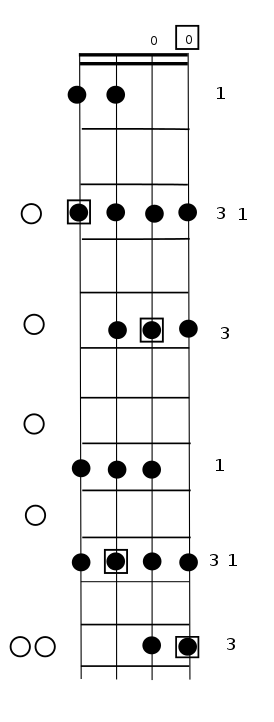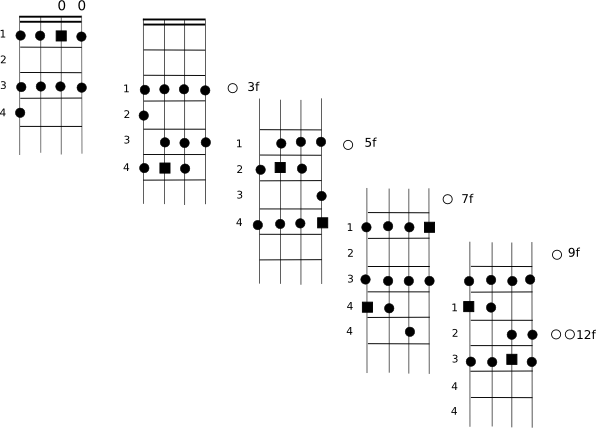Here is a practice track for practicing your myxolidian mode. Seventh chords occur as the chord built on the 5th degree of the major scale, and usually resolve to the Tonic chord, or the 1 chord of the major key. However in the blues and modal tunes, their may be no such resolution. There may be a change to another 7th chord. Or as in this track, there is just one chord the whole way. Notice how interest is built by having a melodic rhythm backing that varies.
The track is built on the D7 chord. So use the myxolidian mode of the G major scale. Or in other words, a D major scale with a flattened 7th. And listen to the next bass track as well, if you want to hear my ideas for soloing!
Here is the track without a bass line for the bass players. Listen to the other track too, with my Bass line, and see if you can copy aspects of it!


